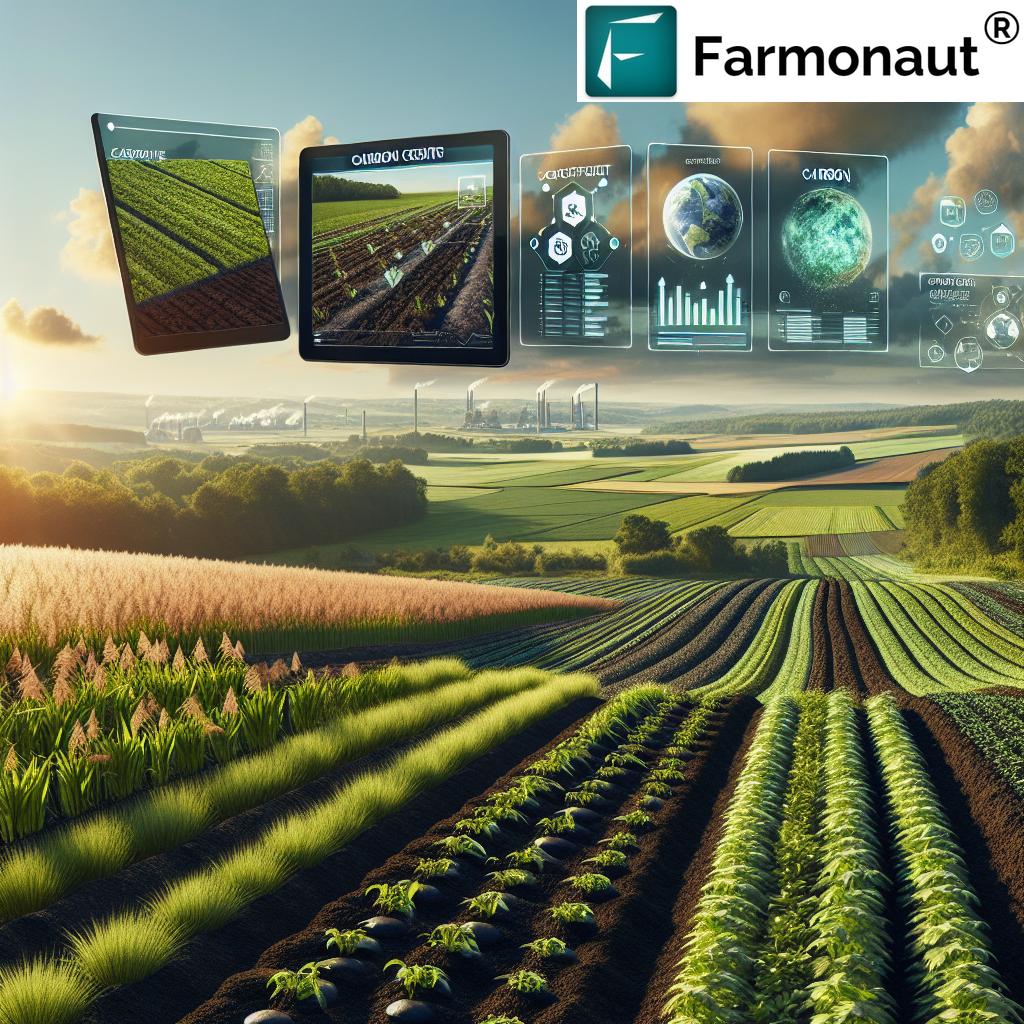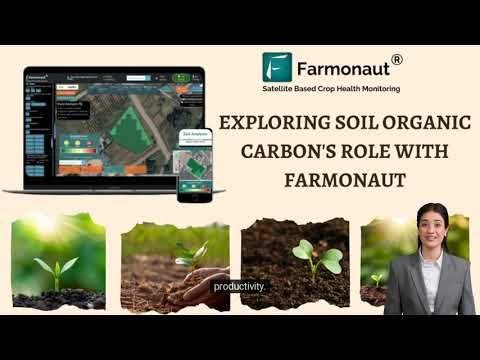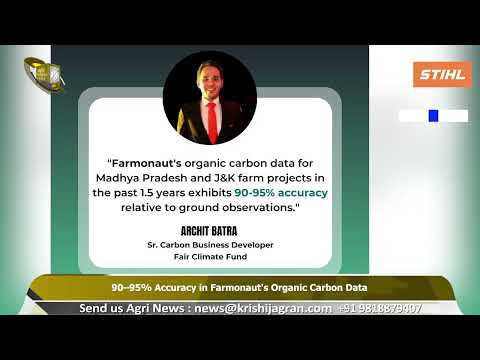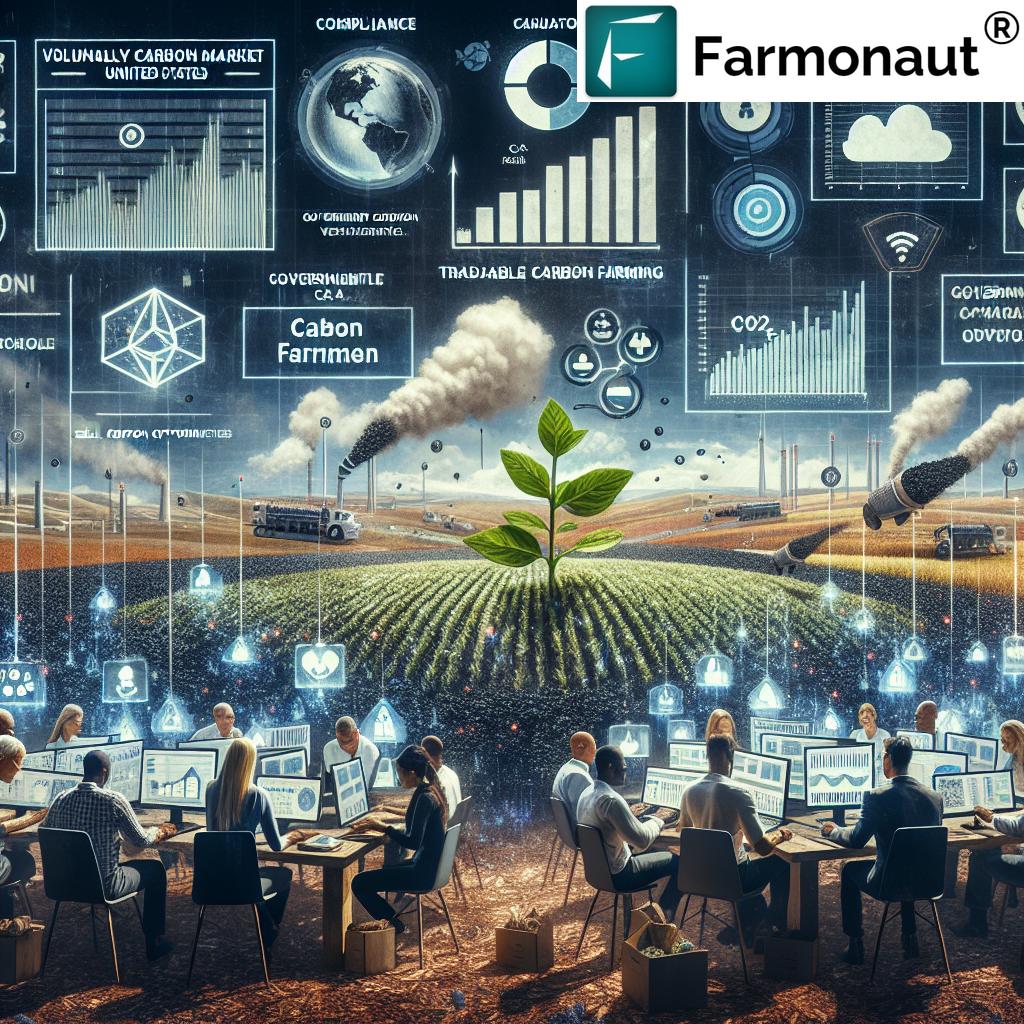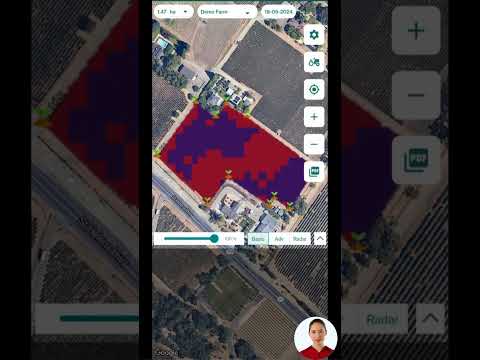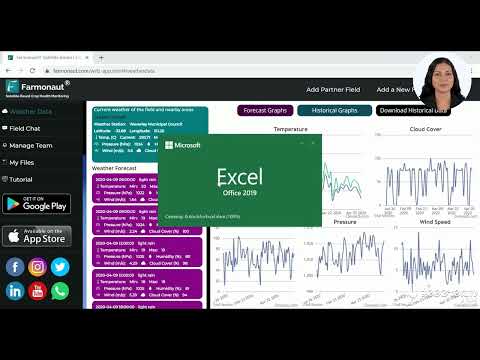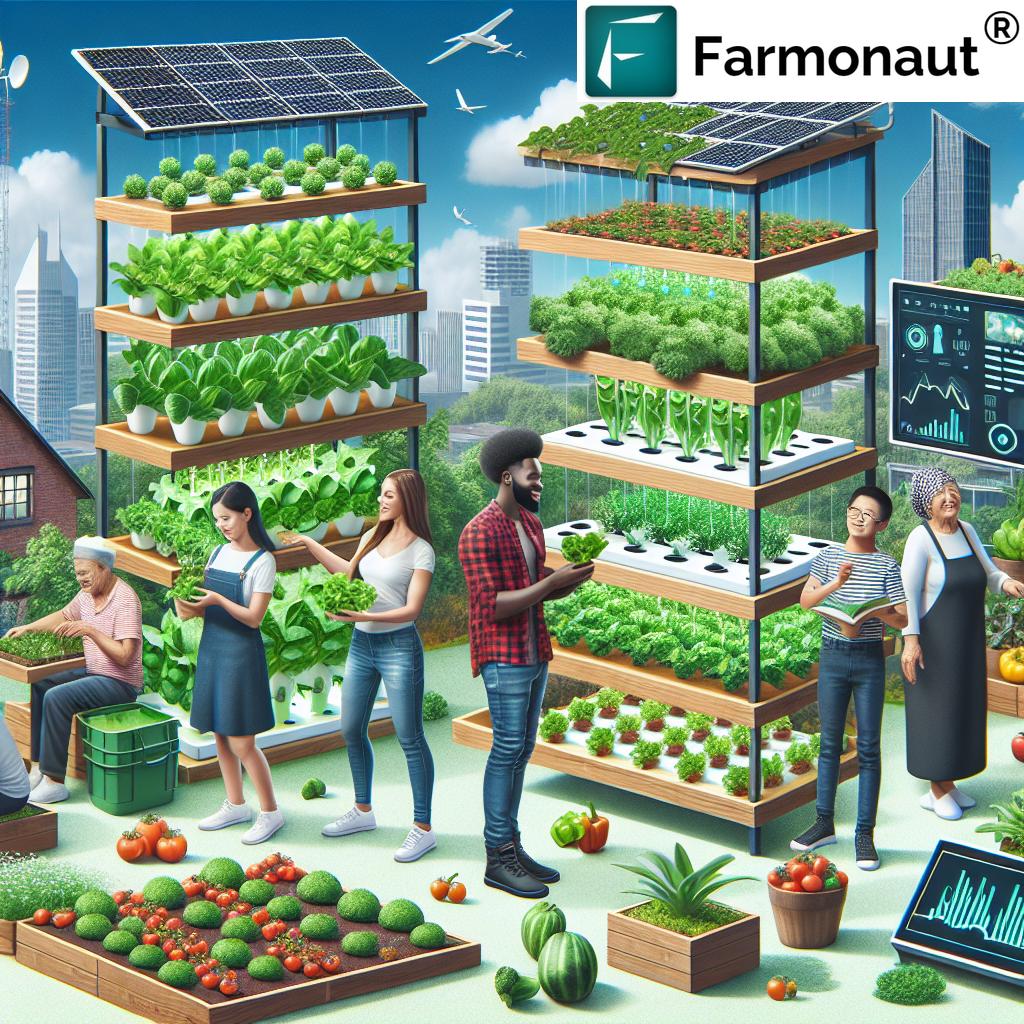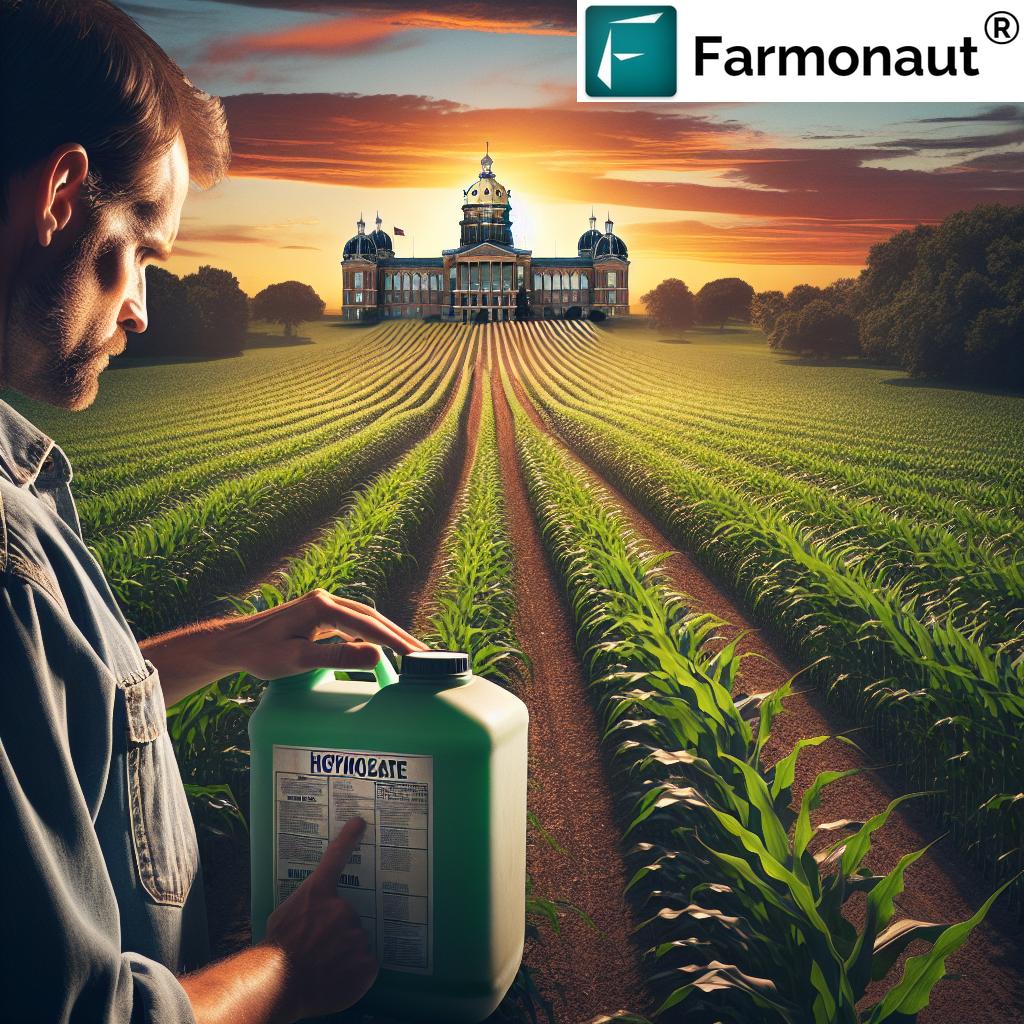Carbon Credits for Farmers USA: Boost Your Income Fast!
Understanding Carbon Credits: A New Avenue for Farmers’ Income
At the heart of carbon credits for farmers lies a simple yet powerful concept: a carbon credit represents the removal or reduction of one metric ton of carbon dioxide ( CO₂ ) (or equivalent greenhouse gases) from the atmosphere. By adopting innovative, sustainable farming practices, producers can actively sequester atmospheric CO₂ in soils and vegetation, generating tradable certificates of greenhouse gas absorption.
These credits are in demand globally, as corporations and organizations strive to meet emission reduction goals and demonstrate environmental responsibility. By producing measured, verified, and additional carbon removal, farmers don’t just protect the climate; they can also boost their income in a sustainable, market-driven way.
- Key Fact: Each carbon credit represents one metric ton CO₂ or its greenhouse gas equivalent removed from the atmosphere.
- In agriculture, this is achieved via practices like no-till farming, cover cropping, agroforestry, and improved grazing techniques.
Focus Keyword presence: By enhancing carbon sequestration in soil through sustainable agricultural practices, we don’t just fight climate change—we open doors for new revenue through carbon credits.
How Do Carbon Credits Work in Agriculture?
- Adopting new farming & land management methods that sequester carbon or reduce emissions.
- Partnering with a carbon offset program (agriculture)—such as voluntary or compliance carbon credit buyers.
- Measuring and verifying the actual reduction or removal of greenhouse gases from your land (carbon credit verification process).
- Receiving tradable certificates for the metric tons CO₂ equivalent achieved.
- Selling the credits to corporations or organizations seeking to offset their emissions.
The Role of Carbon Markets: Where Sustainability Meets Profit
Carbon markets facilitate the buying and selling of carbon credits between farmers and corporations or organizations—making sustainability an economic opportunity. The two primary types are:
- Compliance (Regulated) Markets: Established by governmental bodies with mandatory reductions for certain sectors.
- Voluntary Carbon Markets: Allow companies, organizations, and individuals to purchase credits to offset emissions on a voluntary basis.
Recent years show tremendous growth in the voluntary carbon market, with major companies such as Microsoft and Indigo Ag entering major agreements to purchase large amounts of agricultural soil-based credits. The robust demand demonstrates how carbon credits for farmers can play a pivotal role in today’s green economy.
Key Features of Carbon Markets:
- Tradable & Verified: Carbon credits are issued only after proper verification and reporting.
- Market Price Dynamics: Prices fluctuate according to demand, geography, and type of practices adopted.
- Global Opportunities: The United States holds one of the largest shares in both voluntary and compliance-driven carbon offset demand.
Opportunities for Farmers in Selling Carbon Credits in the United States
The United States is rapidly emerging as a global leader in agricultural carbon markets. There’s growing interest among farmers and ranchers who seek to diversify their income while supporting sustainability and climate change mitigation.
By participating in carbon offset programs (agriculture) and implementing new soil-, vegetation-, and livestock-related practices, farmers can generate and sell carbon credits. These programs frequently offer direct financial incentives, training, and ongoing support.
- Bayer’s Carbon Program: Over 2,600 farmers enrolled across 1.4 million acres, offering $5–$12 per acre for conservation practices. [Source]
- Cargill RegenConnect: Strives to enroll 10 million acres by 2030, with payments of $25 per acre for adopting regenerative farming. [Source]
Why Sell Carbon Credits in the United States?
- Supplement Your Income Fast: Convert sustainable practices into new, tradable revenue streams.
- Become a Climate Solution: Help meet global commitments on emission reduction and climate change mitigation.
- Benefit From Innovation: Modern satellite, AI, and blockchain reduce complexity in monitoring and reporting (AI in carbon measurement).
- Join the National Movement: Tap into government incentives for carbon farming and global market demand.
Want to start measuring your farm’s environmental impact? Explore Farmonaut’s Carbon Footprinting solution for real-time carbon monitoring and actionable insights.
Sustainable Farming Practices & Their Income Potential: Comparing the Options
Which sustainable farming practices drive the greatest carbon sequestration in soil and deliver the best income potential via carbon credits? Let’s compare the most impactful approaches:
Choosing the right combination enables farmers to maximize their income and contribute more meaningfully to global climate change mitigation efforts.
Farmonaut Solutions for Carbon Farming & Market Participation
Maximizing your income from carbon credits starts with measurement, monitoring, and reporting. Farmonaut empowers farmers and agribusinesses with cutting-edge technology for AI-based carbon measurement and farm management:
- Satellite Crop Health Monitoring: Leverage near real-time satellite imagery to monitor vegetation health, soil moisture levels, and resource usage. Farmonaut’s NDVI and crop indices support sustainable decision-making.
- AI-Based Advisory Systems: Use Jeevn AI for personalized, data-driven advice—improving crop productivity, optimizing inputs, and promoting carbon-friendly practices.
- Blockchain Traceability: Transparent farm-to-market records boost trust and support validation in voluntary carbon markets. Learn more about Farmonaut’s Traceability Solutions.
- Emissions & Carbon Footprint Tracking: Track your CO₂ and other greenhouse gas emissions in real time to simplify certification and regulatory compliance.
-
API & Integration: Third-party platforms, researchers, and agribusinesses can access Farmonaut’s API for data, verification, and customized solutions.
API information for developers
API Developer Documentation
For farms seeking to automate fleet, crew, and agribusiness resource movements, Farmonaut’s Fleet Management suite offers enhanced logistics and operational efficiency.
Large farm managers or government agencies may explore Farmonaut Agro Admin App for detailed monitoring and administration across thousands of acres.
With Farmonaut’s technology-driven approach, small and large operations alike can affordably tap into the carbon market.
Challenges: Market, Cost, and Verification Barriers
Despite the clear benefits and potential returns, we must recognize that participating in carbon credit programs comes with several challenges:
-
Complexity & Costs of MRV Processes:
Measuring, reporting, and verifying (MRV) carbon sequestration and reductions is complex and expensive. Transaction costs can eat into profits. -
Market Transparency and Pricing:
There’s often a lack of transparency between what buyers pay and what farmers receive. Middlemen can deplete revenue. -
Long-Term Commitments:
Many contracts require 5–10 year commitments, which might not always match a farmer’s business plans or risk tolerance. -
Verification & Additionality:
Carbon projects require proof that sequestration is “additional,” meaning it would not have happened without incentives. Without standardized reliable measurement, credit integrity is at risk. -
Returns on Investment:
The upfront resource investment may outweigh program payments, especially with high verification and monitoring costs. -
Adoption Challenges:
Not all practices are suitable for every farm type, climate, or soil—careful assessment is crucial.
As highlighted by a recent USDA assessment: high costs, lack of transparency, and verification hurdles can deter participation or reduce returns for participating farmers.
If you’re seeking easier, satellite-based evidence for crop health when applying for agricultural loans or insurance, learn about Farmonaut’s Crop Loan & Insurance Verification Tools. Lower your risk, access better rates, and get rapid approvals.
Government Initiatives & Support for Carbon Credits
The federal government recognizes the enormous potential for carbon sequestration in U.S. soils and has taken steps to help farmers participate and succeed in carbon offset programs (agriculture).
Key Developments:
- Biden Administration $150M Allocation: Recent initiatives strive to help small forest and farm owners collaborate with businesses to sell carbon credits (United States). This expands access for families and underrepresented groups. Details >
- Enhanced Policy Integrity: New policies aim to set strict standards and rebuild market confidence by ensuring credits represent real, measurable emission reductions. This should reduce risk for farmers and purchasers alike. Read more
Regional extension offices and conservation programs continue to offer financial support for adopting certain carbon-farming methods. Always check state and federal resources for programs tailored to your operation size and crops.
Technological Innovations & AI in Carbon Measurement
Modern technological innovations are uniquely suited to tackle the challenges of monitoring, reporting, and verifying carbon projects. Here’s how innovation is transforming carbon credits for farmers:
- AI in Carbon Measurement & Verification: Farmonaut’s suite leverages satellite data, AI analytics, and blockchain to provide reliable, automated reporting on carbon sequestered in soils and crops (carbon footprinting). This minimizes the need for expensive field-based sampling, lowers verification costs, and speeds up certification.
- Spectral Probes & Remote Sensing: New technologies (e.g., spectral sensors, automated core samplers) enable rapid checks for organic matter and carbon changes in the field. Integration with AI analytics improves accuracy.
- Blockchain for Transparency: Utilizing transparent, blockchain-based traceability assures buyers your credits are genuine and trackable from field to marketplace.
- Enhanced Weathering: Novel practices like basalt application to cropland can greatly increase carbon sequestration while also boosting crop yields and resilience. US Corn Belt field studies show up to 15.4 tons captured per hectare over four years, with income potential already rising for early adopters.
Explore the leading edge of soil data and reporting using the Farmonaut Carbon Footprinting Platform.
How to Participate in Carbon Offset Programs (Agriculture)
Ready to begin carbon farming in the United States? Here’s our step-by-step guide:
- Research & Assess: Review requirements from reputable programs (voluntary or compliance). Think Bayer, Cargill, or regional initiatives—each will have specific rules about practice adoption, measurement, and contract length. Confirm eligibility for your acres and practices.
- Adopt Qualifying Practices: Choose from listed options such as no-till, cover cropping, agroforestry, and precision irrigation. The more sustainable farming practices climate change are integrated, the greater the income and climate benefit.
- Set Up Monitoring & Data: Use Farmonaut for easy satellite and automated reporting (AI in carbon measurement).
- Verification & Additionality: Complete the necessary carbon credit verification process. This demonstrates actual climate benefits to buyers and regulators.
- Register & Sell: Once verified, submit your credits to the program for registration and enter the market, selling your credits to buyers seeking emission reduction or offset.
Tip: Start with one or two new practices, track your progress alongside yield and soil health, then expand as you gain confidence.
Frequently Asked Questions: Carbon Credits for Farming
What is a carbon credit, and how does it benefit US farmers?
A carbon credit is a tradable certificate representing one metric ton of CO₂ (or its greenhouse gas equivalent) removed or avoided. In agriculture, farmers can earn credits by implementing sustainable practices that sequester CO₂ in soil or vegetation. These credits are sold to companies and organizations aiming to offset their own emissions. This adds a new income stream while supporting climate change mitigation.
How are credits measured and verified?
Credits are measured using a combination of satellite data, field sampling, and advanced AI analytics (such as Farmonaut’s solutions). Verification by an accredited third party ensures that the carbon sequestration is real and additional.
Are there upfront costs or risks?
Yes, especially for setup and initial monitoring/verification. However, modern AI-driven platforms and government incentives can reduce costs and improve profitability.
What role does AI play in soil carbon verification?
AI in carbon measurement automates data collection, increases accuracy, expedites reporting, and reduces the costs of field sampling. Solutions like Farmonaut support ongoing, near real-time monitoring—critical for satisfying market requirements and ensuring payment.
Which US agricultural practices are most profitable?
Agroforestry, cover cropping, and innovative options like enhanced weathering (e.g., basalt rock) often offer the best combination of carbon sequestration and income—refer to the table in our blog for specific figures.
How does participation affect my land or business long term?
Contracts may require maintaining practices for 5–10 years and regular reporting. However, the benefits—improved soil health, resilience to climate change, diversified revenue—usually outweigh the added responsibilities.
Can Farmonaut help with sustainability goals beyond just carbon credits?
Absolutely! Farmonaut’s Carbon Footprinting suite helps you track emissions, optimize inputs, and trace produce for supply chain transparency—meeting both compliance and sustainability targets.
Get Started with Farmonaut: Subscription Plans for All Farms
Affordable, customized access for carbon credits for farmers, large-scale operations, and agribusinesses. Pick the tools that fit your needs—get real-time monitoring, reporting, and compliance at your fingertips.
Conclusion: Realizing the Potential of Carbon Credits for Farmers in the US
Carbon credits for farmers offer a unique and robust opportunity to increase income, support sustainable farming practices, and become key players in global climate change mitigation. While challenges exist—including complexity, costs, and verification—advances in AI-driven monitoring, blockchain, and government incentives make participation easier, more affordable, and more rewarding.
Using integrated solutions such as Farmonaut’s satellite, AI, and traceability platform, we can track support our journey into carbon markets—simplifying compliance and unlocking the potential of our land for both business and the planet.
Now is the time to act: Assess your farm, adopt climate-friendly practices, and begin your path toward earning carbon credits and building a resilient, future-proof agricultural business in the United States!


